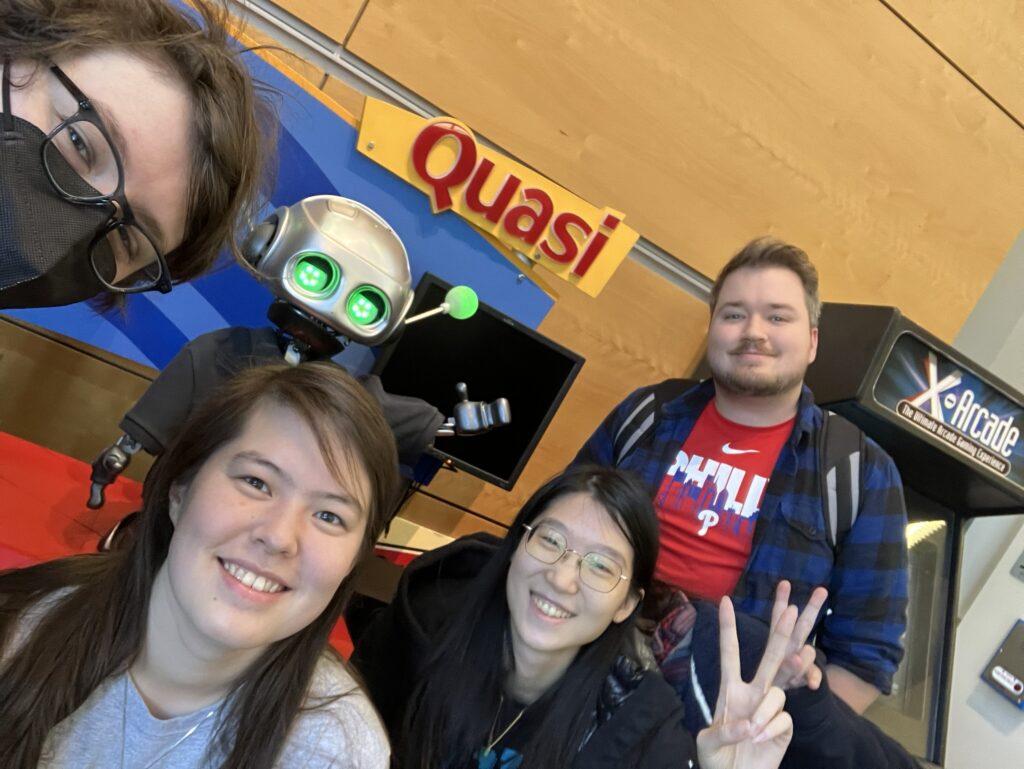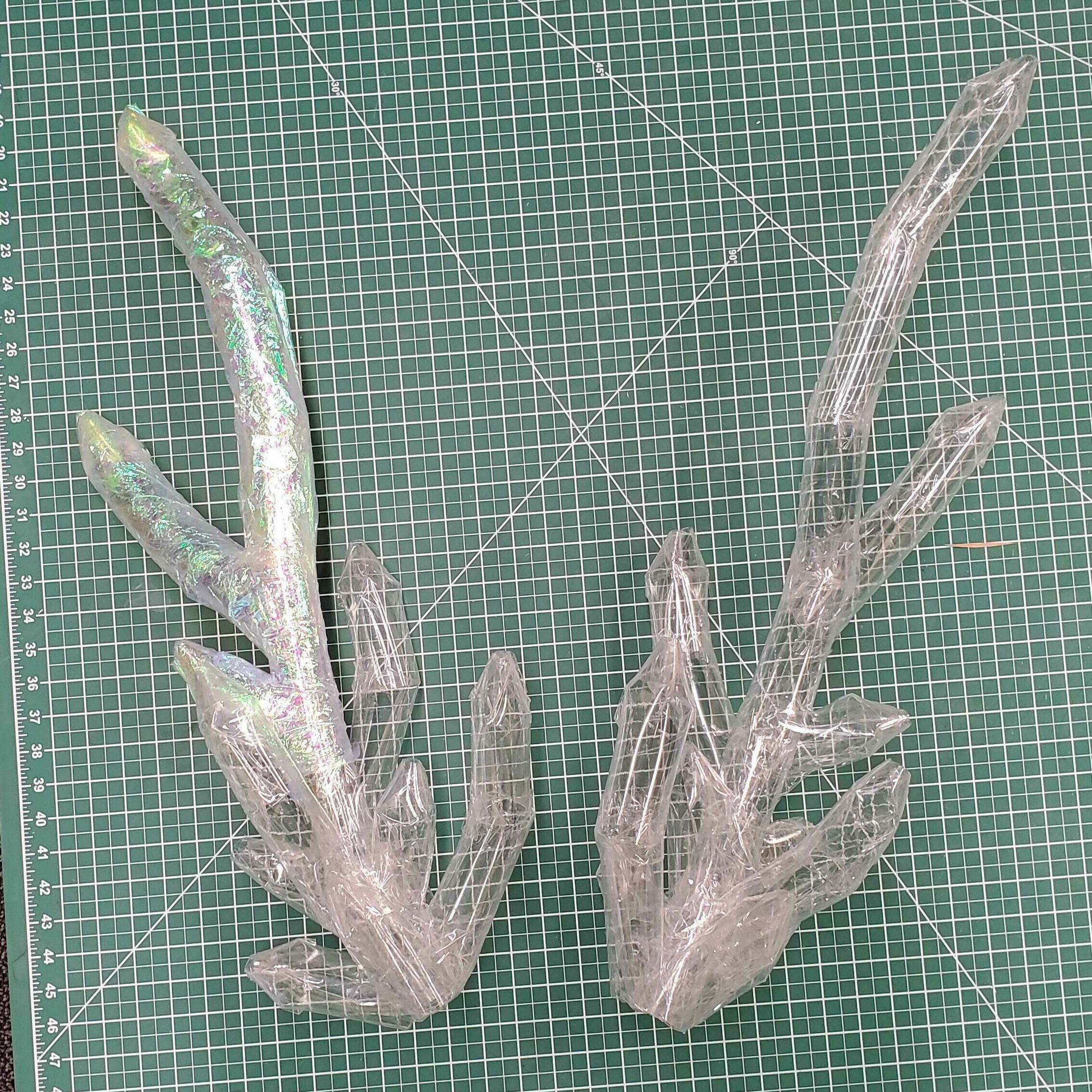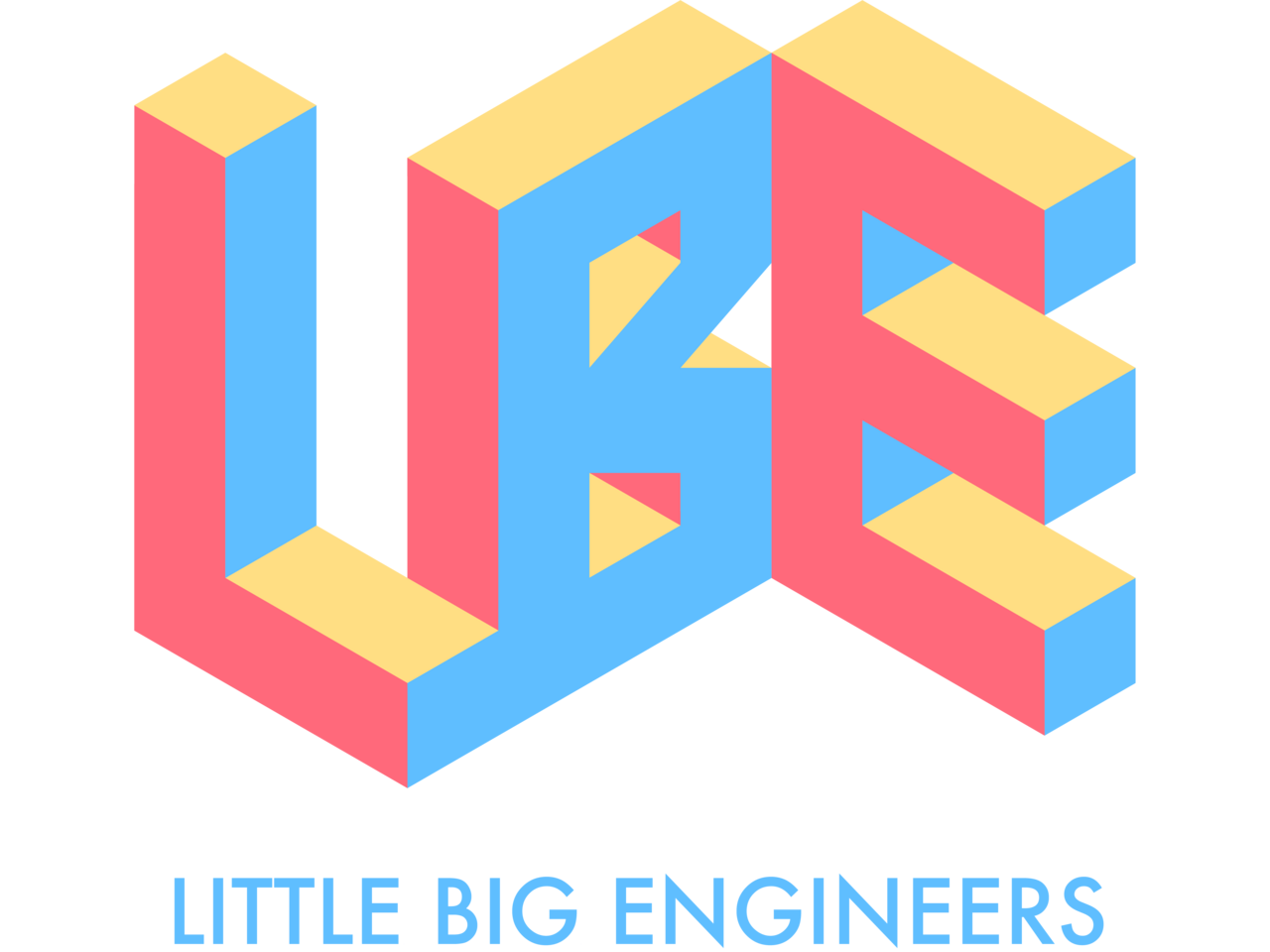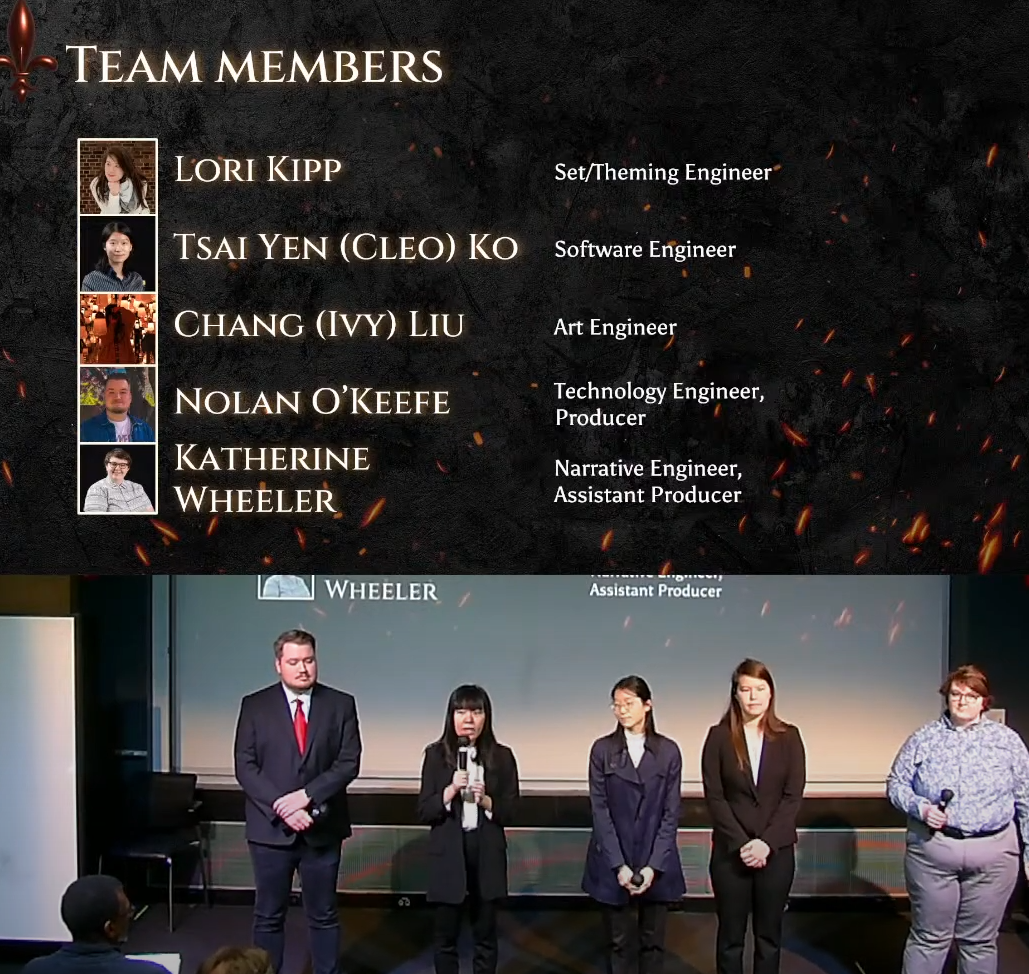Halves
This week was our busiest yet! Our Halves presentation was the very first one on Monday, and we wasted no time in getting down to business afterwards. Watch our presentation here; we are the first ones!
Interaction Design
The key takeaways from this presentation were that the final interaction, where the eggs are returned to the nest and the guests must tap all of their scales on a magic symbol for the final time, seems quite weak. We realized that creating a complex thing for them to do with RFID dragon scales in the final moment didn’t work for several reasons.
- Throughput in the space necessitates each scene to be shorter than the previous one.
- Tapping an RFID onto something is necessarily simple, so creating complexity involves either a puzzle where they figure out where to tap, or a puzzle where they figure out which RFID to tap. Neither of these is compelling in a climactic moment where a dragon is roaring at them, and in fact could be frustrating and distracting.
- Interacting with the dragon needs to feel like a big payoff, rather than another task to be checked off.
- The guest’s goal in the first three rooms is to learn enough magic to revive the dragon eggs. If they’ve returned them to their mother, and their goal shifts to calming the mother down, it could create a point of confusion at the very moment where confusion would be the worst.
So, we decided that instead of making a complex interaction for the final moments of the experience, we will focus on delivering a great show, where we can more tightly control the pacing and focus guests’ attention on the huge puppet, rather than on the tiny RFID scales.
That’s not to say we’re abandoning the concept of a complex puzzle, we’re just shifting it to the second to last scene, where guests unlock the eggs from their preservation in the Dragon Temple. Nolan sketched out an idea for a puzzle using a wheel turning interaction, similar in feel to the Jam-O-Drum. In this puzzle, guests receive a riddle that’s solved by turning the wheel to the correct element, and then tapping the dragon scale on the magic symbol to unlock the corresponding egg. We began prototyping it this week, and once it’s connected into our Unity project, we can playtest it. Ruth suggests using reed switches as the mechanism for the wheel, and we’ve ordered them!
Lighting Design

We made a lot of design progress with lighting this week, starting with a meeting with Todd Brown, Associate Teaching Professor of Lighting and Production Technology at the CMU School of Drama. He’s really excited about the project and is loaning us some equipment to use! Overall, our instinct to use uplighting is a good one for the atmosphere we want, but he cautions us against putting too many fixtures on the floor itself. He gave us advice on how to make sure points of interest are lit fully and how to make sure fog is visible in a dark space, and gave us recommendations on using lighting in puzzles. All of this feedback and information definitely informs our direction and we’re really grateful to have another expert on board!

The team also received a demo of Quasi, a puppeteered robot from the early days of the ETC, hosted by Dave Purta. The primary purpose of this demo was to show how Quasi’s lighting effects are used to communicate his emotions, which we can use to inform the lighting design of the dragon’s eyes and crystal horns. However, this also gave us some ideas for the dragon’s voice. A live operator speaking into a mic with a vocoder gives Quasi a robotic but also emotive voice. We are interested in potentially having a live actor voice our dragon, but recognize that this is likely out of scope. Regardless, various different vocal effects can make our dragon sound nonhuman, which is good to remember since we don’t have access to, say, Dee Bradley Baker.
Audio Design
Speaking of audio, another piece of feedback from faculty at Halves surrounded the audio leakage issue that we expect to have, since we cannot extend any build pieces or pipe and drape to the ceiling due to fire safety. Jesse Schell and Chris Klug both met with us to talk it out, and presented two things we can do to mitigate the issue.


The first is an extremely straightforward story change: rather than saying that a group of guests are rare and chosen for their innate magical abilities, we will say that many have tried to revive the eggs and failed. This provides an explanation for why guests might hear other groups of guests, sound effects, etc.
Secondly, we will be experimenting with thematic white noise throughout the space. Since fire, water, and air are already a part of our story, those sounds can be used as white noise. We’ll be tweaking audio levels and speaker placement throughout the next few weeks.
Set Design
We rearranged the room this week! We were able to figure out smart solutions for our various furniture, with our desks and TV incorporated into the experience, and the rest of our furniture split up amongst several different offices and the POV project room. Thanks to Ruth, Shirley, Heather, and Ricardo for offering office space and Scott for alerting us to a small, completely unused room.
Another update is that because of timing our throughput, we have decided to combine Room 1 and Room 2. This will cut our throughput from 24 guests maximum in the room to 18 maximum, but will drastically decrease the likelihood of guests having to wait in Room 2 for Room 3 to be reset.

For the dragon, this week was all about designing the crystal horns. We met with Christine Barnes, who suggested using clear plastic cups in layers to get the crystal horn effect. We were inspired by this discussion, and although we didn’t follow Christine’s suggestion, it inspired us to use clear plastic tubing (meant as fluorescent light tube protectors) and clear packing tape to create the crystal dragon horns. These horns will be covered in dollar-store iridescent plastic to diffuse the light and make them look more crystalline. This makes the total cost of both horns under $20, and the weight of them just a few ounces.
Mechanically, we iterated over the eye-blinking mechanism in CAD, and plan to laser cut the pieces next week. The laser-cut assembly will mount inside the dragon’s upper jaw, and a pull-cord will allow the puppeteer to make the dragon blink.
Because of concerns with crowding during the festival, we are moving our post-show interaction points into four of the very few rooms that will be unused during the festival. For example, the Visiting Faculty Member office on the 5th floor can be used.
We also constructed projection surfaces for the post-show, as well as frames for them. We plan to texture the frames to look like fake rocks. They are circular, and we think they should be at approximately a 45 degree angle with the ground, to create a sense of depth. We placed an order for more Pico Projectors so that we can further test the angles.
And, finally, Louise Cutter helped us construct moodboards for the set design, linked here!
Goals for next week
Next week is Fall Break, but we will be working during it in anticipation of losing Week 11 to IAAPA. We need to have a puzzle for Room 3 that we can playtest at Week 8’s Tuesday playtest, and again at Playtest Day at the end of Week 8. We need to make progress on the pre- and post-show videos as well.
TL;DR
Feedback at Halves led us to focus on our audio leakage issue and our interaction flow. In parallel, we worked on our lighting design, and progressed on the most difficult elements of the dragon puppet.

